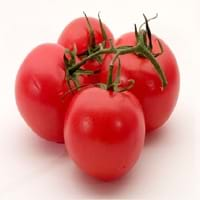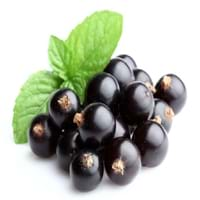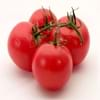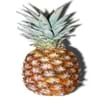Health Benefits
Anti depressant, Cancer prevention, Heart care, Muscle pain relief, Prevents constipation, Regulation of heart rate, Weight loss properties
Arthritis treatment, Cures gastro-intestinal troubles, Diarrhea treatment, Gout treatment, Heart care, Kidney stone treatment, Liver health, Muscle pain relief, Treatment of alzheimer's disease
General Benefits
Controls blood pressure, Eye care, Maintains healthy cholesterol level, Strengthens bones
Anti oxidant properties, Anti-inflammatory properties, Boosts immune system, Cures fever, Eye care, Fights against infections, Improves blood circulation, Improves eye vision, Maintains healthy cholesterol level, Treatment of common cold
Skin Benefits
Anti-aging benefits, Heals sunburn, Skin rejuvenation, Treatment of acne, Treatment of skin diseases
Anti-aging benefits, Brightens and lightens complexion, Skin cleansing, Treatment of dark spots, Treatment of skin diseases
Hair Benefits
Good conditioner, Prevents hair loss, Softening mask
Acts as moisturizer, Prevents hair loss, Promotes longer and healthier hair, Protects hair, Rejuvenates scalp, Remedy for split ends
Allergy Symptoms
Anaphylaxis, Coughing, Diarrhea, Eczema, Hives, Itching sensation in throat, Nausea, Skin Rashes, Runny nose, Sneezing, Swelling of mouth, tongue or lips, Vomiting, Wheezing
Abdominal pains, Asthma, Conjunctivitis, Eczema, Itching, Nasal polyps, Runny nose, Skin rash, Swelling
Side Effects
Heart burn
Diarrhoea, Nausea, Vomiting, Might cause change of urine color
Best Time to Eat
Along with meal, Don't consume at night and before bed, Morning time (before lunch)
Best if taken as a breakfast (or empty stomach), As a snack in the late afternoon, Don't consume at night and before bed, Eat the fresh ones, avoid mixing with any other foods, don't eat after meal., Morning time (before lunch)
Vitamin B5 (Pantothenic Acid)
Vitamin B9 (Folic acid)
Not Available
Vitamin C (Ascorbic Acid)
Vitamin K (Phyllochinone)
Not Available
Lutein+Zeaxanthin
Not Available
Phytosterol
Not Available
Calories in Fresh Fruit with Peel
Calories in Fresh Fruit without Peel
Not Available
Not Available
Calories in Frozen Form
Not Available
Calories in Canned Form
Not Available
Type
Berry, Fruit vegetable
Berry
Season
All seasons
Summer
Varieties
Better Boy, Early Girl, Beefsteak, Beefmaster, Pink Brandywinem, Caspian Pink, Thai Pinks, Hawaiian Pineapple, Kellogg’s Breakfast, Cherokee Purple, Black Ethiopian and Paul Robeson
Ben Sarek, Ben Lomond, Ben Hope, Ben Connan, Ben Avon, Ben Gairn, Ben Dorain, Ben Hope, Ben Sarek, Ben Tirran, Big Ben, Ebony, Foxendown, Titania and Ben Alder
Color
Green, Orange, Pink, Purplish black, Red, White, Yellow
Black
Origin
Central America, South America
Asia, Europe
Soil Type
Loam, Sandy loam
Sandy loam, Well-drained
Climatic Conditions
Sunny, Warm
Cold, Moist
Facts about
- Around 10,000 varieties of tomatoes are grown in the world.
- In Buñol, people celebrate the Tomatina festival where around 1.5 lakh tomatoes are used.
- As per Guinness book of records, heaviest tomato weighed 3.51 kg.
- The life of black currant plant is 20-30 years.
- Oil extracted from black currant seeds is used in production of skin care products.
- Black currant berries are major source of food for the birds.
Cocktails
Yes
Not Available
Top Producer
China
Russia
Other Countries
Brazil, Egypt, India, Iran, Italy, Mexico, Spain, Turkey, United States of America
New Zealand, Poland, United Kingdom, United States of America
Top Importer
Nigeria
Not Available
Top Exporter
Netherlands
Not Available
Botanical Name
Solanum lycopersicum
Ribes nigrum
Synonym
Lycopersicon esculentum
R. nigrum forma chlorocarpum or R. nigrum var. chlorocarpum or R. nigrum var. sibiricum or R. cyathiforme or R. olidum
Subkingdom
Tracheobionta
Tracheobionta
Division
Magnoliophyta
Magnoliophyta
Class
Magnoliopsida
Magnoliopsida
Subclass
Asteridae
Rosidae
Order
Solanales
Saxifragales
Family
Solanaceae
Grossulariaceae
Species
S. lycopersicum
R. nigrum
Generic Group
Nightshade
Saxifrage
Compare Tomato and Blackcurrant
It is important compare Tomato and Blackcurrant as both the fruits have a different nutritional value. Their comparison can be done on the basis of their vitamin and mineral content, calories, benefits as well as characteristics, making it easier for us to choose the best fruit for our diet. Their general health benefits are as follows:
Tomato Benefits: controls blood pressure, eye care, maintains healthy cholesterol level and strengthens bones.
Blackcurrant Benefits: anti oxidant properties, anti-inflammatory properties, boosts immune system, cures fever, eye care, fights against infections, improves blood circulation, improves eye vision, maintains healthy cholesterol level and treatment of common cold.
Fruits are also used as a remedy for various hair problems. The hair benefits of Tomato are: good conditioner, prevents hair loss and softening mask and hair benefits of Blackcurrant are: acts as moisturizer, prevents hair loss, promotes longer and healthier hair, protects hair, rejuvenates scalp and remedy for split ends. Some fruits are known to cause allergic reactions. The allergy symptoms of first fruit are: anaphylaxis, coughing, diarrhea, eczema, hives, itching sensation in throat, nausea, runny nose, skin rashes, sneezing, swelling of mouth, tongue or lips, vomiting and wheezing and the symptoms of second fruit are: abdominal pains, asthma, conjunctivitis, eczema, itching, nasal polyps, runny nose, skin rash and swelling. Get sorted Tomato vs Blackcurrant comparison with the help of fruit comparison tool by fruitvs.com.









